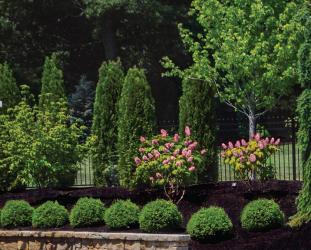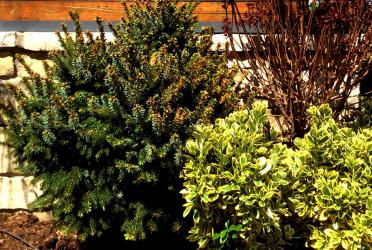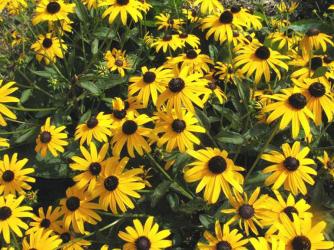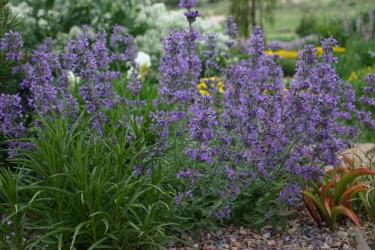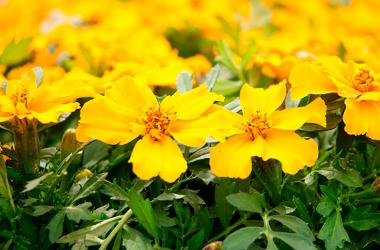Planting particular varieties of vegetables or flowers together can be beneficial to both plants. Companion planting ensures your garden will thrive. Build a plant community with a happy garden that grows in harmony by selecting a few companion plants. Check out local landscapers' favorite combinations.
“Hydrangeas are available in a multitude of colors and varieties and are an absolute favorite of landscape lovers. They also happen to be a favorite of our native deer population. One way that we have learned to protect them is to plant clusters of boxwood varieties around Hydrangeas. The deer detest the boxwoods, and that is usually enough of a deterrent for the deer to steer clear of the luscious leaves and fluffy flowering tufts of our Hydrangeas.” Jim Graeler, Chesterfield Valley Nursery.
“Combining ‘Royal Purple’ Smoke Bush, dwarf Serbian Spruce and ‘Chollipo’ Euonymus is a great way to add dramatic, year-round, color and interest for any hot, full-sun landscape. Over the years, you will find these selections, a classic pairing of hot and cool colors, to truly thrive and inspire.” Steve Roesch, Garden Heights Nursery, Inc.
“Nepeta + Black-eyed Susan – A little about me: Purple is my favorite color, and I love using complementary colors in the landscape. To reflect these personal preferences, I love using Nepeta and Black-eyed Susan in a full-sun perennial garden. Not only do the blooms complement each other, but also the texture of the plants has a nice contrast. The soft Nepeta in the foreground of the more structured Black-eyed Susan creates a wonderful composition in the garden.” Katy Molaskey, Green Guys.
"Apricot Drift Roses and ‘Little Trudy’ Catmint make a striking, long-blooming color punch duet. The Apricot Drift Rose is a lovely 18-24” groundcover shrub rose, which blooms from June to frost. Shear twice a year for a tidier appearance. ‘Little Trudy’ Catmint blooms with clusters of periwinkle flowers along stems of fuzzy mint-colored foliage. This lovely perennial blooms on and off throughout the summer and fall. Shear back once in the summer for maximum blooming beauty. Plant this duo in full sun for maximum blooms.” Christine Knoernschild, Passiglia’s Nursery.
“When thinking of companion planting our mind goes to the roots of the concept: edibles such as lavender, rosemary, sage and tomatoes along with other fruits, veggies and herbs, have been planted in close proximity to other flowering plants to help protect from pests. We like the traditional use of marigolds, as they are known to deter aphids, nematodes, bean beetles, squash bugs and other pests. In more formal gardens lavender with certain marigold varieties can complement a boxwood hedge nicely.” Tom Mee, Retail and Wholesale Operations Director, Frisella Nursery.


